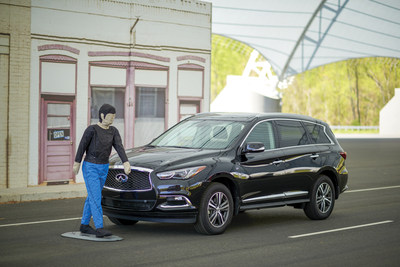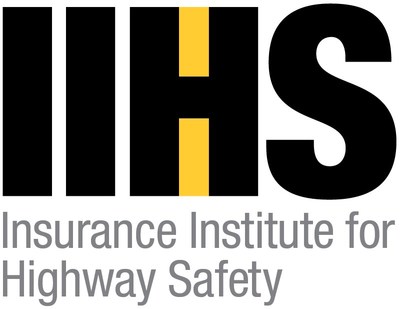|
27.12.2018 19:30:00
|
Latest safety tech on vehicles aims to protect pedestrians
ARLINGTON, Va., Dec. 27, 2018 /PRNewswire/ -- The Insurance Institute for Highway Safety (IIHS) is launching a test program for automatic emergency braking systems on vehicles that can detect and brake for pedestrians. In November, IIHS shared with auto manufacturers the protocol engineers will use in preparation for the early 2019 release of the first IIHS ratings of this feature.

The pedestrian autobrake test is the fourth crash avoidance evaluation in the Institute's battery of safety tests, alongside ratings of front crash prevention, rear crash prevention and headlights.
IIHS engineers have been conducting research tests with a variety of cars and SUVs to pave the way for the new program. A group of 11 small SUVs, all 2018–19 models, will be the first rated.
In line with IIHS ratings for front and rear crash prevention, vehicles will be rated as basic, advanced or superior, based on their ability to avoid or mitigate a crash with pedestrian dummies in track tests at different speeds.
The tests simulate these potential collisions:
- An adult pedestrian crosses a street from the right side of the vehicle and perpendicular to its path, with an impact location, in cases when autobrake doesn't intervene, midway between the vehicle center line and right edge of the vehicle's front end;
- A child pedestrian runs across a street from behind two vehicles parked on the right side of the vehicle's path, with a potential impact location on its front end at the center line;
- An adult pedestrian in the lane near the road's edge facing away from traffic, midway between the vehicle's center line and right side.
Points are awarded based on average speed reductions for five repeated test runs in clear weather on dry pavement during the daytime. Tests are conducted at 20 (12 mph) and 40 km/h (25 mph) in the perpendicular adult and child scenarios, and at 40 and 60 km/h (37 mph) in the parallel adult scenario. Systems that issue a timely warning get a 1-point credit in the parallel adult test.
"The test with the small child dummy is the toughest," says David Aylor, manager of active safety testing at IIHS. "The dummy is hidden by a car and an SUV parked on the right side of the road as the test vehicle approaches, so there's no clear sight line for the cameras — or driver — until the dummy emerges in the vehicle's path."
Although crashes involving child pedestrians are rare in comparison to ones involving adults, engineers are designing these systems to take into account this vulnerable population.
About a third of 2019 models have a standard autobrake system with pedestrian detection capabilities, and another third have an optional system that responds to pedestrians.
Autobrake with pedestrian detection already is making a difference in insurance claims. A 2017 HLDI analysis found that Subaru vehicles equipped with pedestrian detection had claim rates for pedestrian injuries that were 35 percent lower than the same vehicles without the system (see "," May 8, 2018).
A 2011 IIHS analysis of 2005-09 crash data estimated that pedestrian detection systems could potentially mitigate or prevent up to 65 percent of single-vehicle crashes with pedestrians in the three most common crash configurations and 58 percent of pedestrian deaths in these crashes (see "," March 30, 2011).
A total of 5,977 pedestrian deaths occurred in 2017. Of these, 170 were children younger than age 13. Although pedestrian fatalities in 2017 were 20 percent lower than in 1975, they have increased 45 percent since reaching their lowest point in 2009.

![]() View original content to download multimedia:
View original content to download multimedia:
SOURCE Insurance Institute for Highway Safety
 Der finanzen.at Ratgeber für Aktien!
Der finanzen.at Ratgeber für Aktien!
Wenn Sie mehr über das Thema Aktien erfahren wollen, finden Sie in unserem Ratgeber viele interessante Artikel dazu!
Jetzt informieren!